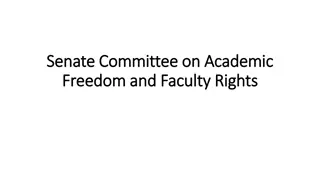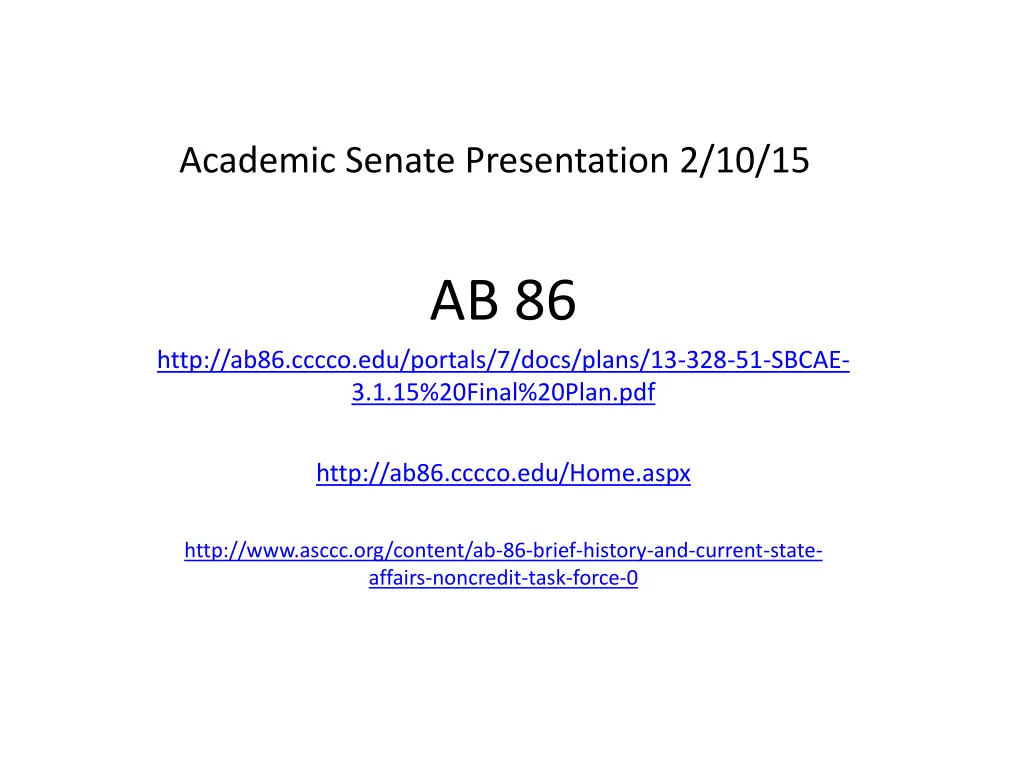
Community College Workforce Development in California: AB 86 Overview
Explore the impact of California's AB 86 on community colleges, workforce development, and career pathways. Learn about regional frameworks, Career Pathways Trust, SB 1070, and recent structural and funding changes in education. Discover resources, initiatives, and collaborations shaping postsecondary education in the state.
Download Presentation

Please find below an Image/Link to download the presentation.
The content on the website is provided AS IS for your information and personal use only. It may not be sold, licensed, or shared on other websites without obtaining consent from the author. If you encounter any issues during the download, it is possible that the publisher has removed the file from their server.
You are allowed to download the files provided on this website for personal or commercial use, subject to the condition that they are used lawfully. All files are the property of their respective owners.
The content on the website is provided AS IS for your information and personal use only. It may not be sold, licensed, or shared on other websites without obtaining consent from the author.
E N D
Presentation Transcript
Academic Senate Presentation 2/10/15 AB 86 http://ab86.cccco.edu/portals/7/docs/plans/13-328-51-SBCAE- 3.1.15%20Final%20Plan.pdf http://ab86.cccco.edu/Home.aspx http://www.asccc.org/content/ab-86-brief-history-and-current-state- affairs-noncredit-task-force-0
Background to AB 86 California Community Colleges Workforce Development Changes to Regional Framework 1. Doing What Matters for Jobs and the Economy http://doingwhatmatters.cccco.edu/ 2. Skill Builders http://www.learningworksca.org/wp-content/uploads/2013/10/MissingPiece_05.pdf http://www.learningworksca.org/wp-content/uploads/2012/09/LW_Brief_Completion_09142012.pdf 3. Salary Surfer http://salarysurfer.cccco.edu/SalarySurfer.aspx 4. How Workforce Pathways Shape College Outcomes and Earnings Gains https://www.youtube.com/watch?v=kH6mtmwzlPQ (video) 5. The Ones That Got Away http://doingwhatmatters.cccco.edu/portals/6/docs/TheOnesThatGotAway.pdf 6. Non Credit Instruction http://www.asccc.org/papers/role-noncredit-california-community-colleges
7. SB 1070 Senate Bill 1070 (Steinberg) extended the Career Technical Education Pathways Program until June 30, 2015. The purpose of the bill is to engage K-16 in improving linkages, increasing readiness of secondary students for postsecondary education, and increasing student success and training in postsecondary education by developing career technical education pathways between high schools and community colleges 8. Career Pathways Trust I and II http://www.cde.ca.gov/ci/ct/pt/index.asp Fund specialists in work-based learning, as defined in Section 51760.1 of the Education Code, to convene, connect, measure, or broker efforts to establish or enhance a locally defined career pathways program that connects school districts, county superintendents of schools, charter schools, and community colleges with business entities. Establish regional collaborative relationships and partnerships with business entities, community organizations, and local institutions of postsecondary education. Develop and integrate standards-based academics with a career-relevant, sequenced curriculum following industry-themed pathways that are aligned to high-need, high-growth, or emerging regional economic sectors. Provide articulated pathways to postsecondary education aligned with regional economies. Leverage and build on any of the following: Existing structures, requirements, and resources of the Carl D. Perkins, California Partnership Academies, and regional occupational programs, including staff knowledge, community relationships, and course development. Matching resources and in-kind contributions from public, private, and philanthropic sources. The California Community Colleges Economic and Workforce Development Program and its sector strategies and deputy sector navigators. Participation in the local California Community Colleges Skills Panel. http://www.caalusa.org/ScarceResources.pdf
Structure & Funding: Changes in 2014-15 Recent Changes in Education AB 86: Education Omnibus Trailer Bill (2013-2014) Regional consortia to plan the restructuring of adult education in California SB 860: Education Finance: Education Omnibus Trailer Bill (2014) Career Development and College Preparation (CDCP) Funding Equalization
CDCP Funding Equalization Why SB 860 is Important SB 860: 84750.5 (d)(4)(A)(ii) Beginning in the 2015 16 fiscal year, career development and college preparation FTES shall be funded at the same level as the credit rate specified in paragraph (2). This rate shall be adjusted for the change in the cost of living or as otherwise provided in subsequent annual budget acts.
Structure & Funding: Changes in 2014-15 SB 173 (LIU) Education Funding: Adult Education SB 173 requires the California Department of Education and the Chancellor's Office to coordinate and issue assessment policy guidelines regarding assessments to be used by school districts and community college districts for purposes of placement in adult education courses offered by those districts as part of an adult education consortium. The bill would also require the department and the Chancellor's Office, as a part of the report required under the adult education consortium program, to jointly develop and issue policy recommendations to the Legislature regarding a comprehensive accountability system for adult education courses offered by school districts and community college districts in accordance with prescribed requirements.
Noncredit & CDCP Funding Approximately 85% of all California Community College noncredit is ESL. Bulk of noncredit is offered by 5 districts San Diego CCD San Francisco CCD North Orange CCD Rancho Santiago CCD Mt. San Antonio CCD 68 of our 72 districts offer some noncredit.
Noncredit course sections summary report (Spring 2014) Sections FTES Enrollment Noncredit 9,403 26,177 461,843 Credit 146,099 485,423 3,940,040 NC% of overall totals 6% of Total sections 5% of total FTES 11% of total enrollment (www.datamart.cccco.edu/Courses/NCredit_Course_Summary.aspx)
LAO Report Recommendations 2012 http://www.lao.ca.gov/reports/2012/edu/adult-education/restructuring-adult- education-120412.aspx Provide a Clear and Consistent Distinction at CCCs Between Adult Education and Collegiate Instruction- Recommendations: Restrict credit instruction in English and ESL to transfer level coursework, and credit instruction in math to one level below transfer. Require courses below these levels to be offered on a noncredit basis. ASCCC does not have a position/recommendation on this. It s up to local senates to determine their college s noncredit/credit cut-off point.
Potential Benefits of Noncredit Programs Open access for students with diverse backgrounds and those seeking ways to improve their earning power, literacy skills and access to higher education First point of entry into college for immigrants, economically disadvantaged and low-skilled adults educational gateway, portal to the future
Future Discussion GOAL: Evaluate best curricular mechanism to support student success and achievement of basic skills outcomes. Evaluate how students will achieve basic skills outcomes of competency in English language skills and mathematics. Colleges may want to add noncredit courses or programs in basic skills given the economic opportunity with CDCP funding equalization. What pre-transfer level skills could be addressed in the noncredit modality? Look to noncredit programs in the state for effective practices. Facilitate dynamic interaction among faculty and administrators. How can noncredit instruction help students and impact student success?
Future Discussion GOAL: Ensure clear articulation within each CCC district from noncredit to credit instruction & clear articulation from the K-12, adult education to the CCC system. Regional consortia should be planning for the seamless transition between adult education, noncredit CCC, and credit CCC instruction. Where is the cut-off point between credit and noncredit?

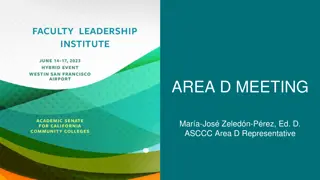


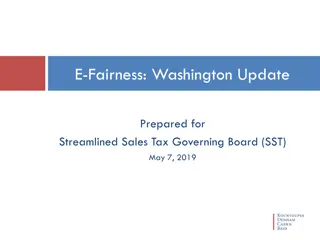
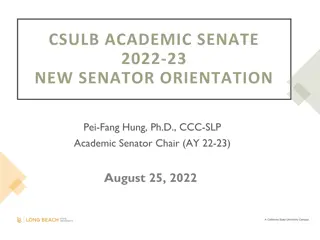

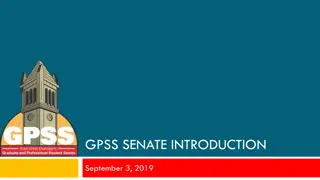


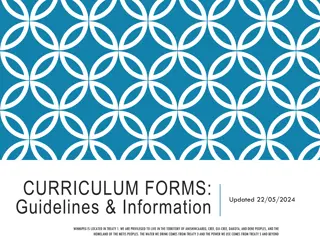


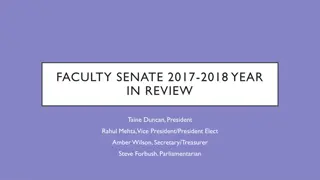
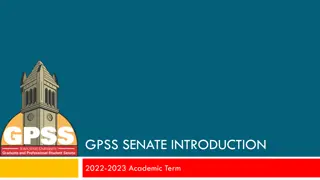
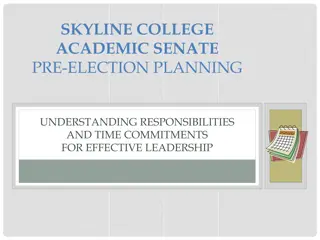
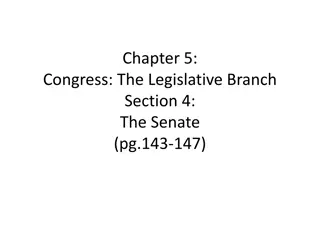
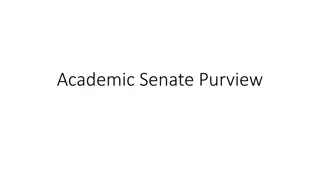

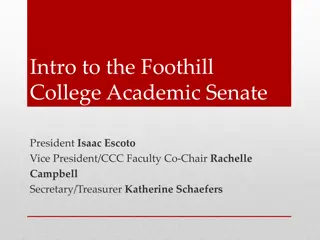
![Overview of the Faculty Senate at [Institution Name]](/thumb/233771/overview-of-the-faculty-senate-at-institution-name.jpg)

